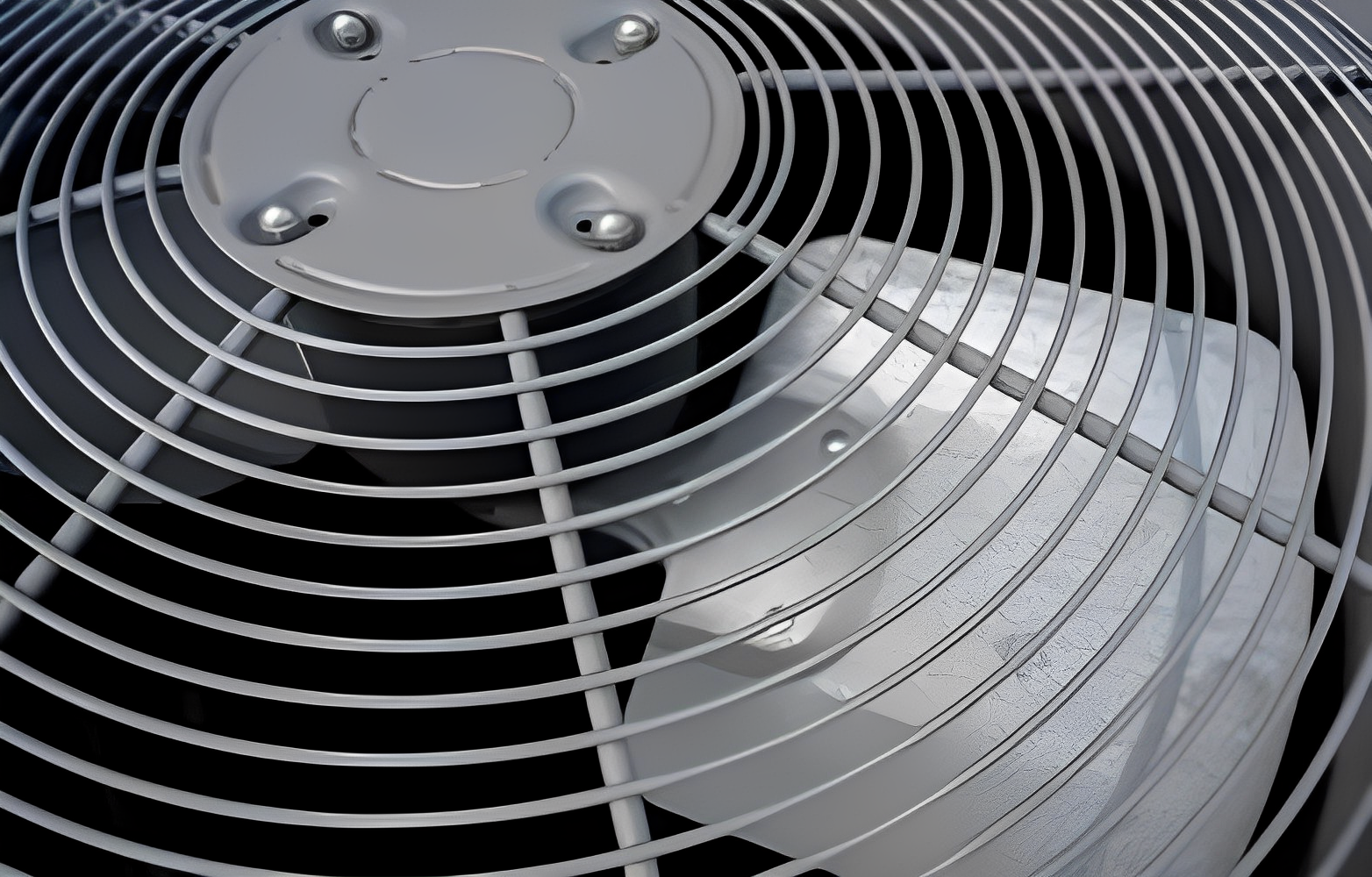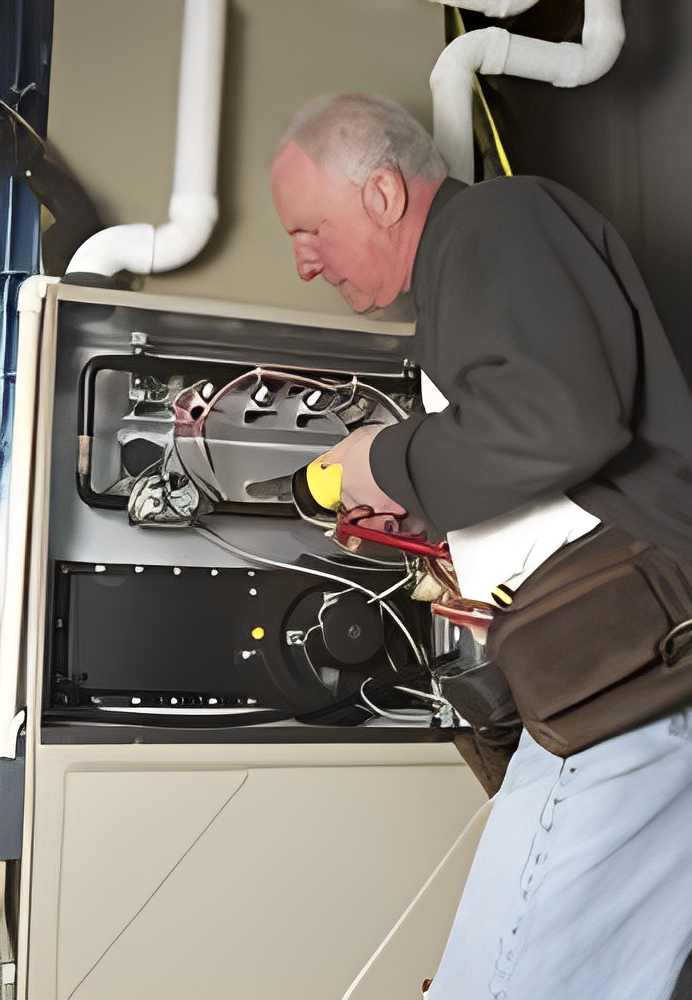The blower motor in an older furnace may need to be replaced. The motor that powers the fan in the furnace is a vital but eventually worn component. But, are furnace blower motors interchangeable? This post’s research into blower motors answers that question.
 The vast majority of blower motors do in fact fit many models. In other words, a different furnace brand can typically be installed in its stead. If your Goodman furnace’s blower motor breaks, you may be able to purchase a replacement on the market that Goodman does not make. However, your furnace’s motor size must correspond to its own. To do this, we need specifics on blower motors. If the furnace is older than 10 or 15 years, the interior components may certainly fail.
The vast majority of blower motors do in fact fit many models. In other words, a different furnace brand can typically be installed in its stead. If your Goodman furnace’s blower motor breaks, you may be able to purchase a replacement on the market that Goodman does not make. However, your furnace’s motor size must correspond to its own. To do this, we need specifics on blower motors. If the furnace is older than 10 or 15 years, the interior components may certainly fail.
However, this doesn’t mean the furnace as a whole can be thrown away. Keep reading to find out when it’s time to replace your blower motor and how to do it yourself.
Step-by-Step Breakdown of Furnace Blower Motor Components:

1. Horsepower (HP):
Role:
Horsepower determines the motor’s power output.
Operation:
– Electricity flows into the motor, activating the coil windings.
– The energized windings create a magnetic field that interacts with the rotor.
– The rotor, connected to the fan, starts rotating, driving the air circulation process.
– The higher the horsepower, the more efficiently the rotor turns, ensuring robust air movement.
2. Amperage:
Role:
Amperage measures the current drawn by the motor.
Operation:
– When the motor is in operation, it draws electrical current from the power source.
– The measured amperage indicates the rate of this current flow.
– Monitoring amperage is crucial to prevent overloading, ensuring the motor operates within safe electrical limits.
3. Voltage:
Role:
Voltage represents the electrical potential required for the motor to function.
Operation:
– The motor is designed to operate at a specific voltage, usually matching the furnace’s electrical system.
– When powered, the motor receives a constant voltage to maintain consistent performance.
– Correct voltage ensures the motor operates without electrical issues or malfunctions.
4. RPM (Revolutions Per Minute):
Role:
RPM indicates the speed at which the motor operates.
Operation:
– As electricity powers the motor, the rotor spins at a rate measured in revolutions per minute.
– The RPM directly influences the speed at which the fan blades rotate, determining the airflow rate through the furnace.
5. Shaft Diameter:
Role:
The shaft diameter is the size of the motor’s rotating shaft.
Operation:
– The motor’s rotating shaft is connected to the fan assembly.
– The correct shaft diameter ensures a secure connection, allowing the motor to drive the fan effectively.
– Compatibility prevents issues like slippage or misalignment.
6. Internal Components:
Role:
Various internal components contribute to motor function.
Operation:
– Motor Bearings: Facilitate smooth rotation by reducing friction. Regular lubrication is essential for optimal bearing performance.
– Wiring and Brushes: Conduct electricity to power the motor. Over time, these may wear, requiring inspection and replacement.
– Capacitor: Stores and releases electrical energy to ensure consistent voltage for motor operation.
7. Lubrication:
Role:
Lubrication prevents dryness and reduces friction during rotation.
Operation:
– Motor bearings are periodically lubricated to maintain a smooth and efficient rotation.
– Lubrication prevents wear and tear, ensuring a longer lifespan for the motor.
8. Capacitor Functionality:
Role:
The capacitor stores and releases electrical energy.
Operation:
– The capacitor stores energy when the motor is not in operation.
– When the motor starts, the capacitor releases stored energy to provide the necessary voltage.
– A functioning capacitor contributes to consistent motor performance.
9. Compatibility Factors:
Role:
Compatibility ensures a proper fit within the furnace system.
Operation:
– Physical dimensions, mounting configurations, and overall size must align with the furnace’s specifications.
– Proper compatibility prevents issues such as misalignment or insufficient power transfer.
How Do You Adjust The Fan Speed On A Furnace?

If you want to replace the fan motor in your furnace, you’ll need to know exactly what kind it is. Information on the motor is needed, including its horsepower, amperage, voltage, rpm, and shaft diameter.
If you need to know what size fan motor you need for your furnace, you should check the manual. It also wouldn’t hurt to consult an HVAC professional for help.
Can A Powerful Fan Motor Be Added To The Heater?
A powerful fan motor can be added to the furnace, the answer is yes. However, for safe operation, you should read the instructions that came with your heater to find out its voltage, wattage, and amplification restrictions.
When Does A Furnace Blower Motor Finally Give Out?
A fan motor can last anywhere from ten to twenty years. Your furnace’s fan motor will wear out depending on its age and how often you use it. The fan motors in a kiln should last for the duration of the furnace’s service life.
However, over time, motor bearings might dry out and wear down due to normal use. The motor’s wiring and brushes on the inside can also break. The life of your furnace can be extended by having the motor serviced once or twice yearly.
To prevent the engine from being damaged, HVAC specialists lube the bearings, check the wiring, and make sure everything else in the furnace is working properly.
When Is It Time To Replace The Blower Motor And How Do You Know?

Here are indicators that your furnace’s fan motor is on the verge of failing. The most frequent ones are:
1) Ventilation Output Decreases
 This is one of the earliest warning signs that the blower motor is ready to give out. If you observe a decrease in airflow from your furnace, check the vents and fan motors for continuity. When this happens, it’s usually because the blower is having trouble forcing enough air through the vent. It’s possible that the house won’t become warm enough from the furnace. Because dust and grime buildup can diminish fan performance, it is also important to inspect air filters and ventilation ducts.
This is one of the earliest warning signs that the blower motor is ready to give out. If you observe a decrease in airflow from your furnace, check the vents and fan motors for continuity. When this happens, it’s usually because the blower is having trouble forcing enough air through the vent. It’s possible that the house won’t become warm enough from the furnace. Because dust and grime buildup can diminish fan performance, it is also important to inspect air filters and ventilation ducts.
In the event of a blower motor failure, the capacitor will also be destroyed along with the blower motor’s ability to receive the necessary operating voltage
2) The Air Vents Are Not Functioning
 If there is no airflow from the registers, the blower motor is broken. It’s possible that the motor is beyond repair and will have to be replaced.
If there is no airflow from the registers, the blower motor is broken. It’s possible that the motor is beyond repair and will have to be replaced.
A professional HVAC expert should be consulted before any major choices are made. A malfunctioning thermostat, relay, electrical wiring, or fan controller could also be at blame. A qualified HVAC specialist will examine the heating system, identify the faulty part, and replace it.
3) Your Electric Bill Has Skyrocketed In Comparison To This Time Last Year
If you see a significant increase in your utility bill this winter. It sounds like you have an issue with your furnace’s components, at least until you can prove otherwise.
A higher than normal electricity bill could be the result of your furnace having to work harder and longer than usual to keep your home at a comfortable temperature. This is just another instance of a regular component failing. This is the motor for a fan or blower. Let’s say it’s been more than a decade or so since you last used the furnace. In that scenario, you should have a professional technician have a look at the system to assess the motor’s health.
4) Strange Noise
The blower motor is usually the culprit when a furnace starts making noise. Sometimes, blower motors will have issues with dry bearings or broken belts. If the motor is making noises like rattling or banging, it may have loose parts.
The Strange Noises emanating from the Stove should not be ignored. This could lead to more serious damage and higher repair costs
5) The Motor Overheats.
If the fan motor is getting on in years, it could overheat and cause problems. The importance of having a regular maintenance schedule every year. They can be useful in preventing mechanical failure, overheating, and high energy costs. If it takes your furnace longer than usual to heat your home, the motor could overheat.
Please try resetting our furnace before deciding to replace it if you discover any of these problems. If your Trane electric furnace has to be reset, check see our post on the subject.
Troubleshooting Guide for Furnace Blower Motor Issues:
1) Ventilation Output Decreases:
Check Air Filters:
– Inspect and replace air filters regularly, as clogged filters can reduce airflow.
– Use the furnace manual to locate and access the air filters.
Inspect Ventilation Ducts:
– Examine ventilation ducts for blockages or restrictions.
– Clear any obstructions and ensure the ducts are clean and unobstructed.
Examine Fan Motors:
– Inspect the fan motors for signs of wear or damage.
– Look for loose connections or broken components.
Verify Continuity:
– Use a multimeter to check continuity in the fan motors.
– Lack of continuity may indicate a motor failure.
2) The Air Vents Are Not Functioning:
Check Thermostat Settings:
– Verify that the thermostat is set to the desired temperature.
– Ensure the thermostat is in the heating mode.
Inspect Electrical Wiring:
– Examine electrical wiring for signs of damage or disconnection.
– Repair or replace damaged wiring as needed.
Test Relay Functionality:
– Test the relay to ensure it is functioning correctly.
– Replace the relay if it is malfunctioning.
Consult HVAC Specialist:
– If air vents are still not functioning, consult a qualified HVAC specialist.
– Professional examination will identify and address the root cause.
3) High Electric Bills:
Check Furnace Efficiency:
– Assess the overall efficiency of the furnace.
– An inefficient furnace may result in increased energy consumption.
Inspect for System Overwork:
– Verify that the furnace is not overworking due to component failures.
– Address any issues identified during the inspection.
Consult Professional:
– If the cause is unclear, consult a professional to assess the system.
– A professional evaluation will pinpoint the problem for resolution.
4) Strange Noises:
Identify Noise Source:
– Determine the type and source of strange noises.
– Rattling, banging, or other irregular sounds may indicate specific issues.
Inspect Bearings and Belts:
– Check motor bearings for dryness or wear.
– Inspect belts for breakage or misalignment.
Lubricate Bearings:
– Lubricate motor bearings according to the manufacturer’s recommendations.
– Proper lubrication can eliminate dry bearing noises.
5) Motor Overheating:
Evaluate Airflow:
– Check for reduced airflow, which can lead to motor overheating.
– Remove any obstructions hindering airflow.
Verify Maintenance Schedule:
– Ensure the furnace undergoes regular maintenance as per the schedule.
– Regular maintenance prevents overheating and mechanical failure.
Reset Furnace:
– Attempt to reset the furnace if overheating persists.
– Follow the furnace manual for reset instructions.
What is the Going Rate For New Blower Motors?
A new motor for a furnace fan might set you back anywhere from $250 to $500. The price of a motor might vary from $70 to $150, depending on the brand and type. Many repairmen and billers work on an hourly basis.
Conclusion
The above article have all the answers for your question; are furnace blower motors interchangeable? The furnace’s blower motor is one that few homeowners look forward to replacing. If you are inexperienced with fixing HVAC systems, you should have a professional do this job.
Disclosure: We may get commissions for purchases made through links in this post.









